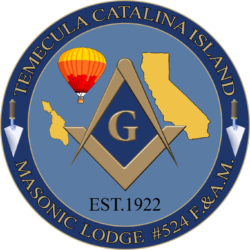CONCORDANT BODIES
There are many organisations and Orders which form part of the widespread fraternity of Freemasonry, each having its own structure and terminology. Collectively these may be referred to as Masonic bodies.
The basic unit of Freemasonry, also known as “Free and Accepted Masons,” to which an individual member belongs is the Masonic Lodge, which alone can “make” (initiate) a Freemason. Such lodges are controlled by a Grand Lodge with national or regional authority for all lodges within its territory. A masonic lodge confers the three masonic degrees of Entered Apprentice, Fellowcraft (or Fellow Craft), and Master Mason.
Whilst there is no degree in Freemasonry higher than that of Master Mason, the degree of the Holy Royal Arch is of great antiquity, and has a special importance in many masonic systems, including those of all three of the oldest ‘Constitutions’ (masonic authorities), namely the Grand Lodges of England, Scotland, and Ireland, in all of which it is considered (by varying constitutional definitions) to be the completion of the mainstream masonic structure. The United Grand Lodge of England (which has no direct authority over other Grand Lodges, but as the world’s oldest Grand Lodge, has a historical influence in terms of regularity and practice) defines “pure, ancient Freemasonry” as consisting of the three degrees of Entered Apprentice, Fellowcraft, and Master Mason, plus the supreme Order of the Holy Royal Arch.
A number of other organisations, most of which are known as ‘masonic’, or have a title identifying themselves as masonic, require candidates for membership to be a Master Mason in “good standing” (subscriptions paid, and not under any form of discipline). In some countries, notably the United States of America, the Scottish Rite and the York Rite are the two principle routes available. In other countries, notably England, Scotland, Ireland, and many of the countries of the Commonwealth, a large number of ‘stand-alone’ Orders and Degrees exist, without the umbrella organisation of a ‘rite’. Some of these masonic bodies use numbers as an informal way of referring to or identifying the degrees they confer, but the most important and therefore “highest” degree is always the third, or Degree of Master Mason. These other masonic bodies (sometimes known as ‘additional degrees’ or ‘side degrees’) are optional pursuits for those who wish to take their masonic membership and activity beyond what the United Grand Lodge of England calls “pure, ancient Freemasonry”.
In some countries, notably the United States of America, there are also organizations affiliated with Freemasonry which admit both Master Masons and non-Masons who have some relation to a Master Mason, such as the Order of the Eastern Star, International Order of Job’s Daughters (Job’s Daughters International) and the Order of the Amaranth. Still other affiliated organizations like the Order of DeMolay and the International Order of the Rainbow for Girls admit non-Masons and have no requirement that an applicant be related to a Master Mason. These associated organisations for non-masons are only rarely encountered in European Freemasonry.

